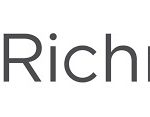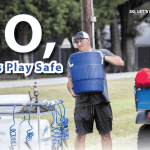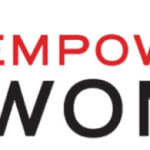This is taken with permission from the Fall 2023 issue of So Lakelands Magazine, a product of Lakelands Magazines and the Index-Journal Co. The author is Amy Alley.
For athletic trainers like Jason Reed, student-athlete health and safety is the top priority.
The heat is on here in the South, despite the slow and steady approach of autumn. But even with temperatures climbing, football season looms large, which means student athletes are practicing, despite often extreme heat. With recent headlines warning about the dangers of sports-related injuries – some serious, life threatening, or fatal – how can parents and families ensure that their student athlete remains safe, protected, and even hydrated?
For Jason Reed this is a personal mission. Having been a high school and college athlete himself, his love for sports and fitness led him to a career in sports medicine and athletic training, and he now as the director of athletic training for PlaySafe in South Carolina and Georgia. He also serves as the athletic trainer for Greenwood High School. November starts his 24th year as an athletic trainer, and this is his ninth year at Greenwood High. “PlaySafe, a 501c(3) nonprofit organization, has had a contract with District 50 since 2016 for an athletic trainer at Greenwood and Emerald High Schools,” said Reed. “The District pays a portion of the overall cost, Self Regional Healthcare pays a portion, and PlaySafe raises the rest in each community it serves through grants and contributions.”

Reed pointed out that athletic training services for school sports teams are not state funded, so it is up to organizations like PlaySafe, clinical outreach programs, or hospital systems to provide these essential services.
“Relationships with and support from our local physicians, hospitals, and communities are the keys to successfully providing quality sports medicine services to our student-athletes. Self Regional, which includes the Montgomery Center for Family Medicine and Orthopeadic Associates of the Lakelands, does a phenomenal job of supporting us,” said Reed.
Athletic trainers wear a lot of hats. They focus of course on injury prevention, diagnosis, treatment, and rehabilitation of athletes. But they also write and create policies related to practicing during bad weather, during illness outbreaks – like Covid, and many other facets related to the health and wellness of student-athletes.
“Things have changed significantly in regards to conditioning and workouts over the years,” Reed said. “It used to be that athletes went from one sport in the fall, to a winter sport, and then to a spring sport. A lot of student athletes are now just playing one or two sports, and sports teams are going year-round. Athletes are maintaining their conditioning by continuously conditioning, lifting, and playing their sport or sports throughout the entire year. While conditioning has improved overall, we now see breakdowns, imbalances, and fatigue due to a lack of rest and recovery periods. You also see more sport burnout. Kids are tired of their sports and their commitments by the time they reach college.”

Athletic trainers are part of the allied healthcare profession, just like nurses, physical therapists, etc., and they can provide immediate medical care and services. They are, in fact, specifically trained to do so, whether it is determining a young athlete should not participate on a particular day due to a pain/injury or diagnosing and treating an injury when it occurs. “It’s all about communication,” Reed said. “I am a resource. I can help facilitate medical care, skip steps such as seeing your primary physician first and get you right into a specialist. I have connections with physicians throughout the community who work with athletes, but I can only utilize them if I am aware of the problem.”
Reed strives to encourage young athletes to pay attention to their body and how they feel and to let go of the fear of sitting out a game or practice. “That’s not my goal – to hold people out,” Reed said. “Don’t ignore pain or injury. If I know about their problem early enough, oftentimes I can keep them on the field, doing what they love. My job is to keep them out there. And if I know early enough, I can get them back out there. If they wait too long to report an issue, I have to sit them out. I have no choice. But if they come to me, I can work with them. I can rehabilitate them using my training and generally get them out there quicker if I am aware there’s a problem.” While student athletes must have a recent physical form on file in order to play a sport, cardiovascular issues often remain undiagnosed without an electrocardiogram. According to a June 28 YaleMedicine.org article, “Though rare, sudden cardiac death is the most common cause of death in young athletes. The American Academy of Pediatrics (AAP)—using data from the Centers for Disease Control and Prevention (CDC)—estimates that about 2,000 individuals younger than age 25 die each year of sudden cardiac arrest in the United States.” According to the same article, “Sudden cardiac arrest (SCA) occurs when an electrical abnormality in the heart creates an irregular heartbeat, disrupting the heart’s pumping action. This leads to a loss of consciousness and an absent pulse. If not treated within minutes, sudden cardiac death (SCD) is likely to occur. When people under age 35 die of cardiac arrest, it’s most often because of a congenital (present at birth) issue, and it’s not unusual for them to not even know they had a heart condition.”

While all high school league coaches are certified in CPR and the use of AEDs (automatic external defibrillators), Reed feels that requiring proof of EKGs as well as a physical could go a long way in preventing cardiovascular related incidents. And he’s not alone. Conversations have been ongoing in the South Carolina legislature to make EKGs required as part of sports physicals for student athletes in the state.
A 2015 bill requiring student-athletes in South Carolina to have an EKG as part of their preparticipation physical failed, but many continue to advocate for the screening to be mandatory. The NCAA endorses and recommends EKGs for college athletes, but the test is not yet a mandatory part of pre-participation exams.
The issue of EKG screenings was again recently at the forefront of the collegiate sports world after Bronny James, an 18-year-old freshman basketball player for the University of Southern California and son of famed NBA star LeBron James, suffered a sudden cardiac arrest during an on-campus practice in late July. It was the second incident of a sudden cardiac event for a USC Trojans basketball player in as many years.
Usually EKGs are only recommended as part of pre-participation sports physicals if there is a family history of cardiac abnormalities or if concerning symptoms exist. “If during a physical a heart murmur is discovered,” Reed said, “there may be an EKG, echo, or a stress test performed, but there can be abnormalities no one knows about without performing an EKG. And we are fighting for this requirement.”

Part of what Reed and the coaches he works with do is to educate student athletes and their families on the importance of proper nutrition and hydration. “You gotta eat to have fuel for your body,” he said. “If I have someone suffering from heat illness or cramping, it has become my very first question – ‘Did you eat today?’ And definitely stay hydrated. However, we can preach on and on about reporting injuries, proper nutrition and hydration, and communicating with us. But some don’t get it until it happens to them,” said Reed.
Prevention is one of an athletic trainer’s primary domains. Not only prevention of injury, but also the prevention of worsening of an existing injury. “The High School League does a great job of creating policies,” Reed said. “We enforce them. We take every opportunity to educate our athletes and their parents and families.”

Reed presented Greenwood High student athlete Drew Geoly with a Comeback Award in 2022.
At pre-season parent meetings, Reed reminds attendees to “help me, help you.” “Communication and education, these are key,” he said.
Athletic trainers and coaches also strive to ensure practices are at times when the heat isn’t as severe. Six a.m. practices are not uncommon. “And every venue has an emergency action plan specific to that site,” Reed stated. “It includes not only the address, but latitude and longitude in the event of an emergency where a medical transport helicopter is needed. It has all the different roles for people to follow. Everything is spelled out. We also have cold tubs for immersion if someone gets overheated. We use wet globe temperatures to tell us how long student athletes can be outside and with what equipment. We also utilize an acclimatization policy for our players – two days in helmets, two days in helmets and shoulder pads, then two days in full gear.”
How hot is too hot? “We don’t practice outside if it’s over 92 degrees wet globe temperature,” he said. “But we also use common sense. If the wet bulb temperature is low but the heat index is high, we may not practice. We use all the tools we have to make informed decisions to keep our athletes safe. Health and safety of our student-athletes is our top priority.”
We use all the tools we have
to make informed decisions to
keep our athletes safe. Health
and safety of our student athletes
is our top priority.
Jason Reed
PlaySafe USA is a Sports Medicine Services 501c(3) non-profit organization, providing Athletic Trainers to secondary schools. Our Certified Athletic Trainers are sports-related injury prevention, assessment, and care experts, whose presence saves lives. They also specialize in patient education to prevent injuries in the first place, which reduces rehabilitation and re-injury healthcare costs.





